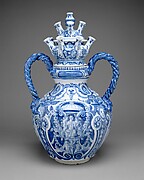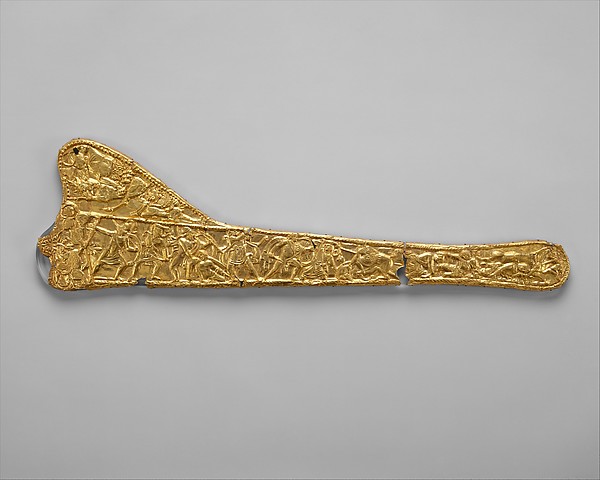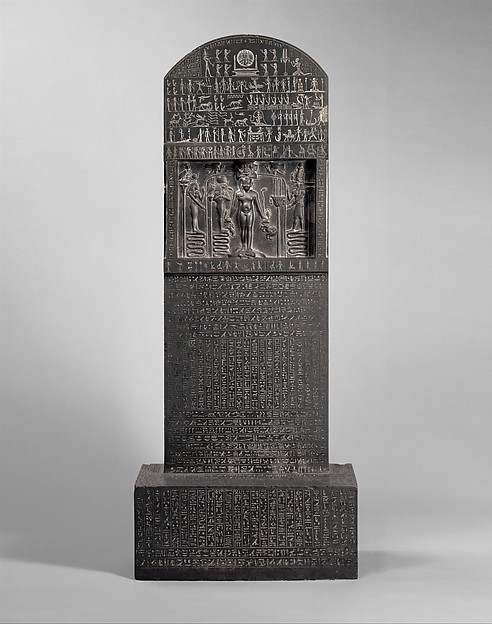"Met field trip"
 Long ago there were many people that existed on planet earth. In this "time before" there were no electronics devices that were made. These people dependent on the surroundings to survive. So there were these great scientist in search of this great land of innovators .
Long ago there were many people that existed on planet earth. In this "time before" there were no electronics devices that were made. These people dependent on the surroundings to survive. So there were these great scientist in search of this great land of innovators .
The scientist names are Giovanni, Viri, Veronica, and Mike. They set off to a great land and one of the first things that they found was Greek temples. They were amazed on how they could create such towering columns with the use of there hands. It was a great find. Veronica one of the scientist decided to take this opportunity to open up a gallery of her very own and display these great works of art.
So the scientist split up and went to find more great works of art for there own galleries.
As I gazed upon these wonderful items, I decided that I wanted to take back with me to my own gallery to show these wonderful items to be displayed for all the world to see in my new gallery [opening soon] called:
"The Depiction of History Through Art”
 1)As a curator I need to be very selective in my choices because people will be looking at the art and the placement of it. What I found in this "Greek land" was marble fragments of people celebrating festivals and depiction of Gods. These Greek people had many Gods that they worshiped. In this marble slate is a gentleman being confronted by two Greek Gods. As my adventurous eyes gazed upon all of these great marvels I learned of a time when clothing must not been around or people were more open to "showing" there bodies. I only say this because the statues are of naked men. However on the other hand The Ancient Greeks took their entertainment very seriously and used dramatics as a way of investigating the world they lived in, and what it meant to be human.
1)As a curator I need to be very selective in my choices because people will be looking at the art and the placement of it. What I found in this "Greek land" was marble fragments of people celebrating festivals and depiction of Gods. These Greek people had many Gods that they worshiped. In this marble slate is a gentleman being confronted by two Greek Gods. As my adventurous eyes gazed upon all of these great marvels I learned of a time when clothing must not been around or people were more open to "showing" there bodies. I only say this because the statues are of naked men. However on the other hand The Ancient Greeks took their entertainment very seriously and used dramatics as a way of investigating the world they lived in, and what it meant to be human.
Collections Greek
Ten marble fragments of the Great Eleusinian Relief
Date: ca. 27 B.C.–A.D. 14
Accession Number: 14.130.9

2) Among the items that I wanted to collect a a curator to put in my gallery was this beautiful vase made of enamel earthenware. The handle and the top of the vase were made separate and dipped into a darker blue glaze and the vase itself was designed for Queen Mary and it was part of a larger design series of free-standing obelisks. History says the vase stood in the halls of the Queen's apartments in the palace in Hampton Court. The Queens courts people would put flowers in the holes on the top decorated in blue and white. This peace of history is very great item to display to show that even in history people enjoyed nice items and took care of them in a way that it would last over the years.
Vase by: Daniel Marot the Elder
(French, Paris 1661–1752 The Hague)

3) As I search for other great relics I came across this wonderful weapon sheath. It is made from pure gold and decorated with elaborate embellishments.I found out that these were used in royal ceremonies by the Greeks.
Sheet-gold decoration for a sword scabbard
Period: Late Classical or Hellenistic
Date:ca. 340–320 B.C.
Culture: Greek or Scythian
Medium: Gold

4) As I looked at this painting I realized that it is the Virgin Mary holding baby Jesus and I believe David captured a sense of innocence in this painting. This has to be in my gallery especially with the Virgin Mary and Child. I like the way and his use of "chiaroscuro" to convey the volume of the figures.
The Rest on the Flight into Egypt
Gerard David (Netherlandish, Oudewater ca. 1455–1523 Bruges)
Date:ca. 1512–15
Medium:Oil on wood

5) In this detail of the Stela, What I found out about this piece is that Horus emerges from the background and is next to what seems to be a young Pharaoh in this three-dimensional statue. This might of being used to tell the life of a young Pharaoh because the "eye of Horus" was often used to symbolize sacrifice, healing, restoration, and protection for a new Pharaoh.
Magical Stela
Period:Late Period
Dynasty:Dynasty 30
Reign:reign of Nectanebo II
Date:360–343 B.C.

6) I love the color blue and when I was on my quest for things to be in my gallery I know that this was one of the items. It is from Tutankhamun. "King Tut" he was a great young Pharaoh in Egypt. To me this ring might be like the ring of "the pope" today when people "kiss it" as a symbol of loyalty.
Ring with the name of Tutankhamun
Period: New Kingdom, Amarna Period
Dynasty: Dynasty 18
Reign: reign of Tutankhamun
Date:ca. 1336–1327 B.C.
7)This quilt is called "Between Earth and Heaven" it relates to the West African traditions of strip-woven textiles. I wanted to have this in my collection because I learned that the person who made it took it from all "recycled things from the dump" and created this master piece. He took bottle caps and flatten them out and woven fabric into the design. up close it looks like pure gold. You would never know that it is "bottle caps."
Between Earth and Heaven
El Anatsui (Ghanaian, born Anyako, 1944)
El Anatsui (Ghanaian, born Anyako, 1944)
Date: 2006
Accession Number: 2007.96
8)This was a painting on the wall as we entered the great hall of Egypt. I believe this to be close to Thebes in Egypt where treasures would be found by the four great scientist.
9)Finally at last the young scientist meet again on this "grandiose" adventure and found the tomb of the Pharaoh Perneb. Should they dare to enter and see all of the wonderful things inside. Of course. Lets see what they find inside.

Inside were all of these amazing paintings of a time when there were no electronics and people would describe there lives on the cave walls as a remembrance of who they were.
[Originally built around 2381–2323 B.C. at Saqqara, the cemetery of Egypt's ancient capital Memphis, this monument was acquired from the Egyptian government in 1913.]

10) Inside the tombs were riches beyond your imagination. Like these bracelets made of gold and rings embellished with jewels.
11) Also inside the great tombs of the Egyptian Pharaohs tomb were vases of many kind. Also was strange Egyptian writing. The young scientist decided to stay and explore more artifacts in the wonderful kingdom for there gallery collection.
In my gallery I wanted to display all of these different items. The reason is because throughout history each piece has a very different historical meaning. I wanted to show how that even back then there were "master craft" people with so little tools and that these artifacts are still around today. People have "borrowed" crafts from each generation of art.
Also things that we don't use are being "regenerated" into master pieces. My gallery is meant to show "pieces of art throughout time" and how it has lasted.
The End. [Fin]
In my gallery I wanted to display all of these different items. The reason is because throughout history each piece has a very different historical meaning. I wanted to show how that even back then there were "master craft" people with so little tools and that these artifacts are still around today. People have "borrowed" crafts from each generation of art.
Also things that we don't use are being "regenerated" into master pieces. My gallery is meant to show "pieces of art throughout time" and how it has lasted.
The End. [Fin]




No comments:
Post a Comment